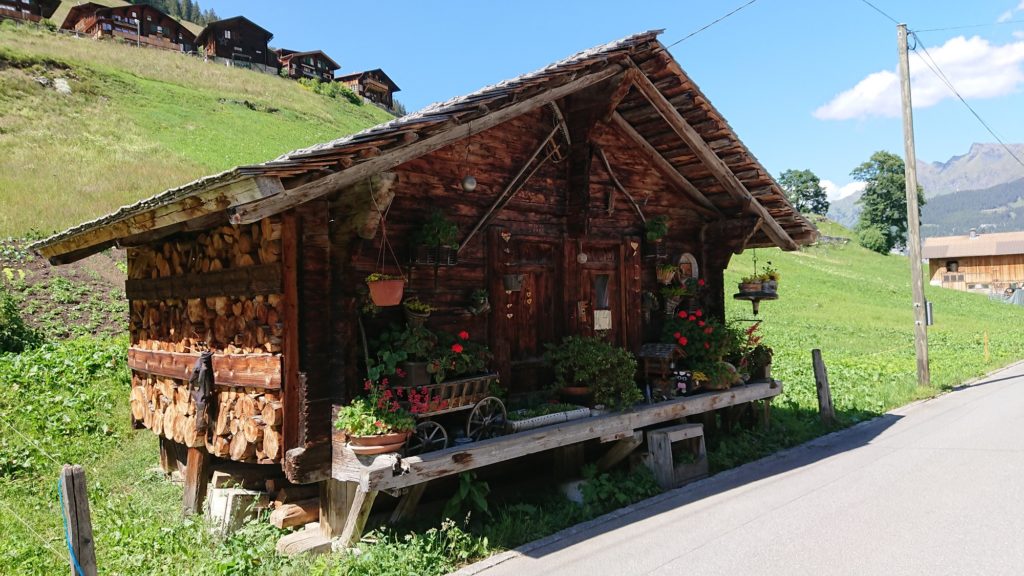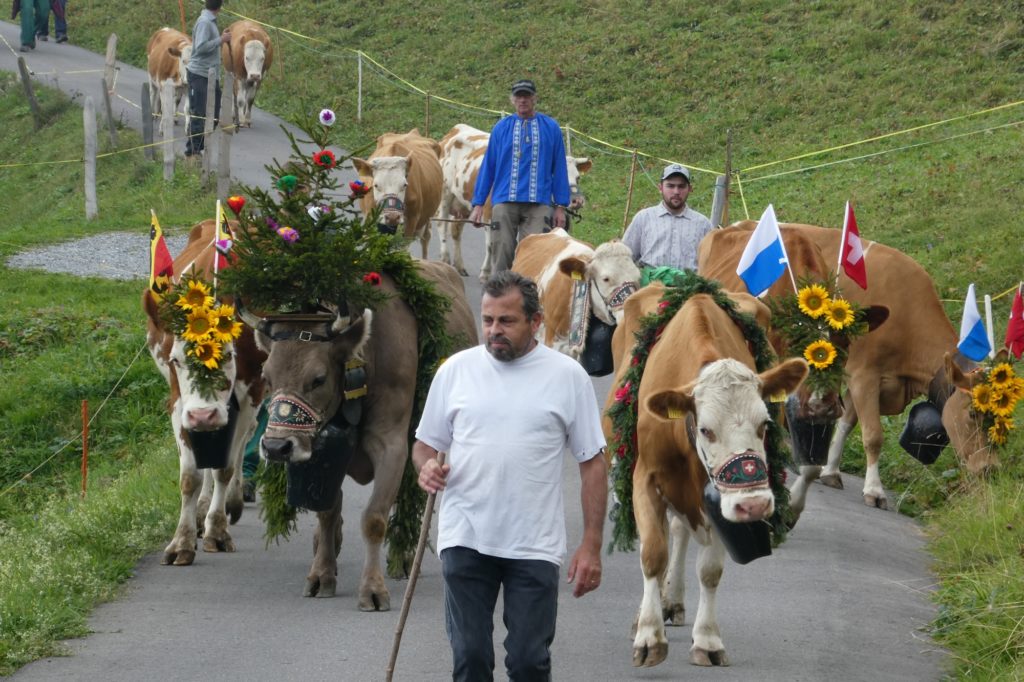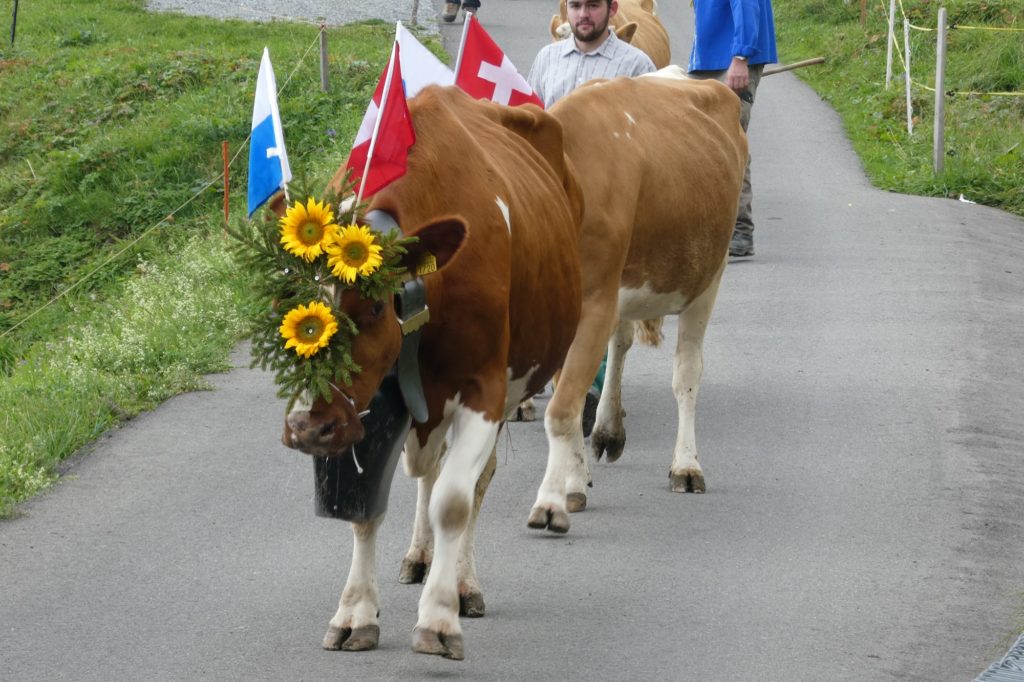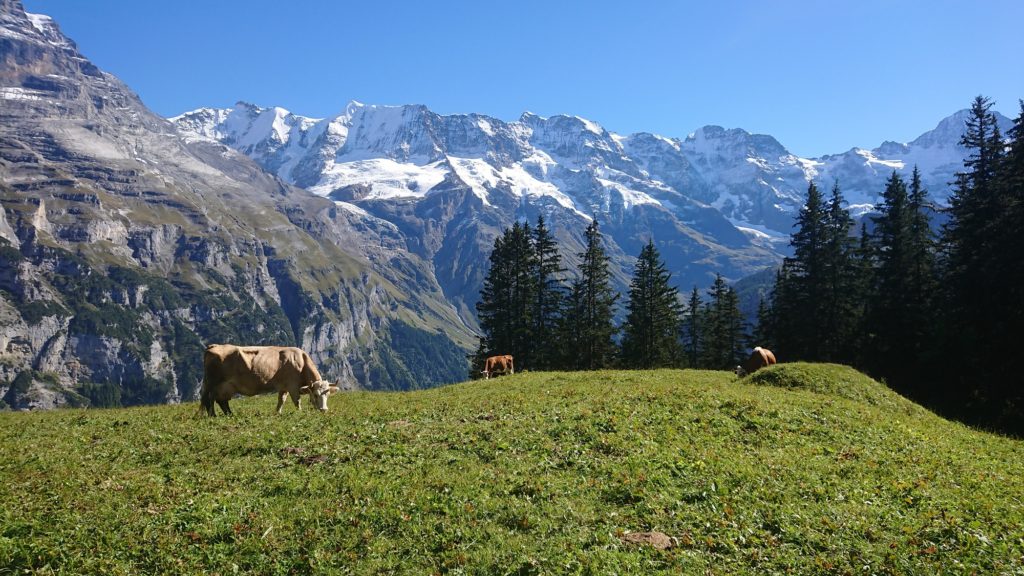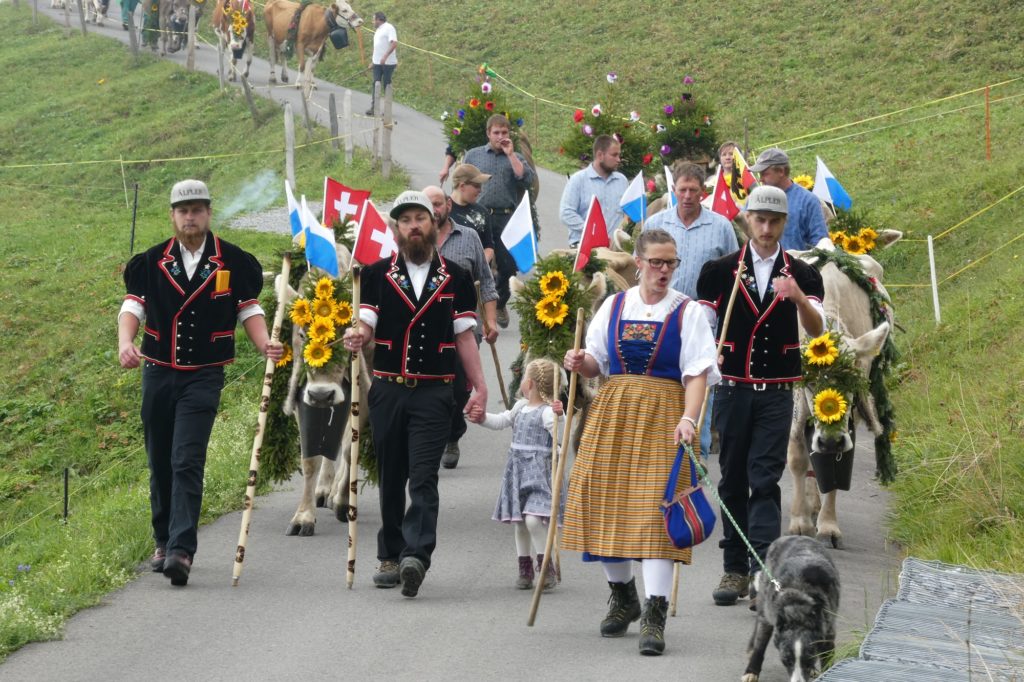Now the purple gentian and fringed gentians are in flower. In higher places you can find the great yellow gentian (Gentiana lutea) and the common monkshood. Almost every day swallows can be seen on their way southwards. They spend an hour in the village chasing gnats and then fly over the Petersgrat. Because most meadows have been mown the marmots can be seen easily. A particularly favourable spot is in the Blumental, but they are also easy to observe at Chilchbalm or on the way to Rotstockhütte. The best time to see them is early in the morning. If you have time you can watch them collecting hay and in just a few weeks they will close their holes and spend the winter asleep on this hay.
Every September some men suffer from an incurable illness - hunting fever. With dog and gun they hunt the chamois and ibex. They usually sell the chamois to local restaurants, which make delicious chamois ragout from them. For those who have never tasted this game specialty, it is highly recommended.
Around the Day of Prayer and Repentance (about 20th September) the mountain summer usually comes to an end. The cattle can no longer find enough food and a sudden change in the weather forces the farmer to bring them down from the alp. Each family now receives its cheese. All over the village whole wagon loads of mountain cheese can be seen disappearing into the old cheese lofts. At the cable car station in Stechelberg, a cheese market takes place every year at the end of September, where cheese from the most diverse alps in the Lauterbrunnen Valley can be bought. Throughout the year the farmers sell their cheese individually. Signs in the village indicate the sale of alpine cheese at various points. The cheese matures continuously and must be regularly treated with salt water by the farmer's family. Some like the young, mild alp cheese, others prefer the mature, recent two-year-old alp cheese. It is hard as a rock and is particularly suitable for grating.

